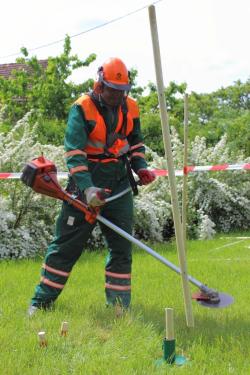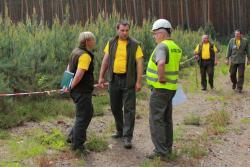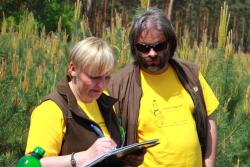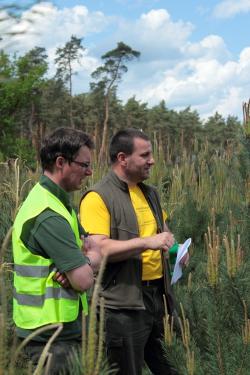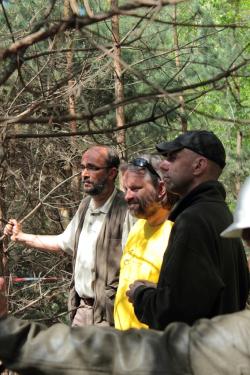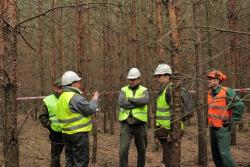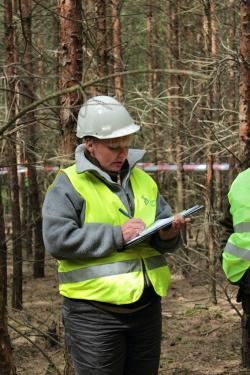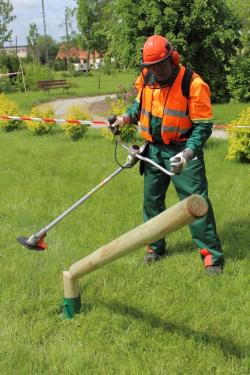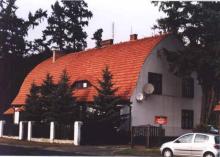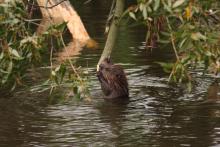 Asset Publisher
Asset Publisher
Polish forests
Poland is in the European lead, while concerning the area of all forests. They cover about 29,2 % of the country territory, and grow within the area of 9,1 million hectares. The overwhelming majority of the forests is state owned, of which almost 7,6 million hectares are managed by the State Forests National Forest Holding..
The number of Polish forest is still growing. The forestation rate of the country has increased from 21 % in 1945 to 29,2 % at the moment. Between 1995 and 2008, the forest area increased by 310 thousand ha. The basis for afforestation works is the "National Programme for Increasing the Forest Cover" (KPZL), assuming an increase of the forestation rate up to 30 % by 2020 and up to 33 % by 2050. Polish forests abound in flora, fauna and fungi. 65 % of the total number of animal species live there.
The forests grow in our country on poor soils, mainly because of the development of the agriculture in previous years. It influences the distribution of the types of the forest sites in Poland. Over 55 % of the forest areas is covered with coniferous forests. In other areas, there are forest sites, mainly the mixed ones. Their small part constitute alder and riparian forests – not more than 3 %.
In the years 1945 – 2011 the area of natural deciduous tree stands within the area of the State Forests National Forest Holding increased from 13 to 28,2 %.
Within the lowlands and uplands the most often occurring tee species is pine. It covers 64,3 % of the forest area of the State Forests National Forest Holding and 57,7 % of private and commune forests. In the mountains the predominant species is European spruce ( in the west) and European spruce with beech (in the east). Domination of pine is the result of carrying on sustainable forest management in the past. Once, the monocultures (crops or cultivations of one species) were the answer to the great demand of industry for wood. Such forests appeared to be quite fragile to climatic factors. They also were often the prey of pests' expansion.
In Polish forests, the share of other tree species, especially deciduous trees have been systematically increasing. The foresters have stepped aside from monocultures – that is why, they try to fit specific species of the forest stand to the natural stand, that would be proper for the given area. Thanks to that, in the years 1945 – 2011, the area of the deciduous tree stands within the lands of the State Forests National Forest Holding increased from 13 to 28,2 %. There occur more and more frequently the following tree species: oaks, ashes, maples, sycamore maples, elms, but also birches, beeches, alders, poplars, hornbeams, aspens, tilias and willows.
Our forests are the most often represented by the forest stands aged 40 to 80 years. The average age of the forest equals 60 years. More and more trees are of big size at the age over 80 years. Since the end of the Second World War, the forests' area has increased up to almost 1,85 million hectares.
Raport o stanie lasów w Polsce 2012
 Asset Publisher
Asset Publisher
XIII Konkurs Prac Pielęgnacyjnych
XIII Konkurs Prac Pielęgnacyjnych
W tegorocznym XIII Konkursie Prac Pielęgnacyjnych, który odbył się 21-23 maja na terenie nadleśnictwa Góra Śląska brała udział reprezentacja każdego z 25 nadleśnictw.
W regulaminie konkursu znalazły się następujące konkurencje:
KONKURENCJA I - CZYSZCZENIA WCZESNE. Celem było wykazanie się znajomością zasad wykonywania zabiegu czyszczeń wczesnych. Zawodnik musiał potwierdzić umiejętność kształtowania „szkieletu" przyszłego drzewostanu.
KONKURENCJA II - CZYSZCZENIA PÓŹNE. W tej konkurencji leśniczy musiał wykazać się wiedzą w zakresie zasad wykonywania zabiegu hodowlanego jakim jest czyszczenie późne natomiast operator– precyzją przeprowadzenia ścinki przy użyciu kosy mechanicznej.
KONKURENCJA III - TRZEBIEŻ WCZESNA I PODKRZESYWANIE DRZEW. Konkurencja ta obejmowała wyznaczanie drzew dorodnych w drzewostanie II klasy wieku na powierzchni 5 – 8 arowej, podkrzesanie ich do wysokości 4-5 m. Po wyznaczeniu drzew dorodnych należało oznaczyć drzewa do usunięcia.
KONKURENCJA IV - TEST WIEDZY LEŚNEJ DLA LEŚNICZYCH. Test obejmował 20 pytań problemowych z zakresu hodowli lasu.
KONKURENCJA V - SPRAWDZIAN SPRAWNOŚCI OPERATORA KOSY MECHANICZNEJ. Konkurencja składała się z trzech części:
1. Precyzji obalania,
2. Obalania przez wykonanie dwóch cięć,
3. Ścinki na czas z uwzględnieniem dokładności cięcia.
Konkurencja miała na celu sprawdzenie umiejętności operatora kosy mechanicznej, jego świadomości, co do wykorzystania w trakcie ścinki odpowiedniej części tarczy i opanowania techniki pracy tym narzędziem.
Przeprowadzony konkurs był nie tylko współzawodnictwem drużyn, ale również okazją do spotkania, na co dzień pracujących w różnych nadleśnictwach pracowników, wspaniałą formą szkolenia oraz wymianą doświadczeń.
Po podliczeniu punktów w poszczególnych konkurencjach wyłoniono najlepszych zawodników tegorocznych hodowlanych zmagań. Punktacja była bardzo wyrównana, a o miejscu na podium decydowała wyższa punktacja uzyskana w konkurencji I lub II.
Najlepszym okazał się zespół z Nadleśnictwa Jarocin w składzie: Hubert Czerniejewski i Łukasz Jaworski, zdobywając 135 pkt. II miejsce zajęło Nadleśnictwo Turek uzyskując tyle samo punktów, III miejsce - Nadleśnictwo Syców – z liczbą 134 pkt., IV miejsce - Nadleśnictwo Gniezno – z tą samą punktacją, V miejsce – zajęli gospodarze - zdobywając 132 pkt.
Konkurs przebiegał w atmosferze zdrowego współzawodnictwa pod okiem głównego sędziego konkursu - Jędrzeja Szyguły.


 fot. Paweł Fabijański
fot. Paweł Fabijański
 fot. Paweł Fabijański
fot. Paweł Fabijański
 fot. Paweł Fabijański
fot. Paweł Fabijański

